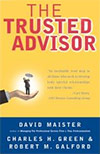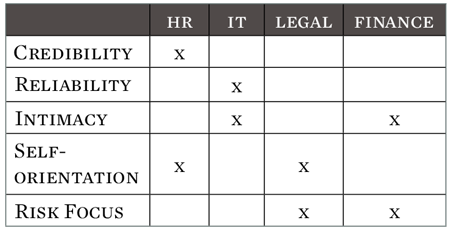This article was first published in Businessweek.com
“Much has been written about the foolishness of the risks that the financial sector undertook, the devastation that its institutions have brought to the economy, and the fiscal deficits that have resulted. Too little has been written about the underlying moral deficit that has been exposed—a deficit that is larger, and harder to correct.”
—Joseph Stiglitz
“‘Is not commercial credit based primarily upon money or property?’ the committee’s counsel asked. ‘No, sir,’ [J.P.] Morgan replied. ‘The first thing is character …. Because a man I do not trust could not get money from me on all the bonds in Christendom.'”
—J.Pierpont Morgan
Trust is the bedrock of financial institutions, according to authorities including, but hardly limited to, the two cited above. Yet trust in the financial sector lags even trust in government, itself now at a 50-year low, according to recent survey data from Pew, Edelman, and Harris. This is not merely an economic issue, or even a legal issue. It is also a social and moral issue.
That raises a vexing public policy question: How do we go about rebuilding trust? Trust goes well beyond the narrow realm of statistical dependability. It raises issues of character, of the ability to accept the word of those with whom we do business. At the simple level of accepting a piece of paper as “legal tender” because a government says it is, all financial institutions and transactions ultimately rest on personal, emotional, and social trust. Yet our usual approaches to rebuilding trust fail on all these counts.
Most solutions to rebuilding trust in the financial industry boil down to four generic approaches: structural, regulatory, compliance, and incentives. They are all rooted in either economic or legal perspectives.
Breaking Up the Big Banks?
None of them deal with trust—both a social and a moral issue—in either social or moral terms. That failure suggests why all four customary approaches are themselves inadequate. Here’s how and why we need another approach.
• Structural Structural change in the industry includes solutions such as reviving the Glass Steagall Act or breaking up too-big-to-fail institutions. But the dominant trend in financial services since 1990 has been consolidation, not breakup. Switching directions might not be easy and doing so calls for judgments about what size financial institutions makes sense since some experts—for instance, Larry Summers—argue that we need fewer, not more, small financial institutions.
Would breaking up work? Note that Canada’s banking system is far more concentrated than that of the U.S., yet performed far more safely in the recent crisis. The U.S. has done breakups successfully in the entertainment, telecom, and oil industries. However, breakup in the accounting industry came coupled with massive paperwork. Can it be done more cleanly in the financial sector than in accounting? A breakup policy is a massive and expensive bet to place in the face of conflicting data.
The structural solution has one major problem: It tries to solve an issue of social trust via the law.
• Regulatory. Some suggest greater regulation, either by giving discretionary power to regulators (e.g., capital requirements) or by more aggressive enforcement, as in the recent Securities & Exchange Commission suit against Goldman Sachs (GS). A look at the last eight years suggests, however, that ineffective regulation has been part of the problem.
Not only the SEC, but the Federal Emergency Management Agency, the Environmental Protection Agency, the Federal Aviation Authority, and the Food & Drug Administration have been criticized for ineffectiveness in recent years.
Some of the regulatory problems lie in the unequal power of governmental institutions vs. the comparatively wealthy industries they regulate. The gaps are particularly apparent in the securities and pharmaceutical industries. To the extent that money implies sophisticated operations, it is economically and politically problematic—if not impossible—for a regulator to achieve parity. One could even argue that the regulated always end up in control of the regulators.
The regulatory solution has one major problem: It tries to solve an issue of social trust with politics.
• Compliance. A further approach to restoring trust is to define a set of observable processes and activities and to presume that if companies’ actions are in compliance with them, that their resulting behaviors will be trustworthy.
The compliance approach suffers two defects. First, it requires the inference that good input generally results in trustworthy output—often true, but hardly a slam dunk. Second, it substitutes mechanical behaviors and processes for intentions and values. Not only do behaviors not imply specific motivations, but the act of substituting behaviors for ethical motivations tends to decrease the role of motivations in the first place.
Compliance requires a far lower threshold of behavior than following trustworthy motives. It’s no accident that so much of the financial industry prefers compliance-based standards to fiduciary standards. Compliance is a much lower standard that doesn’t require client-focus.
The compliance solution thus has one major problem: It tries to solve an issue of social trust with business processes and data observations.
• Incentives It’s common for financiers, lawyers, business students, and politicians to say that the issue boils down to preventing perverse incentives in the economic system. So common, in fact, that it’s easy to overlook two huge flaws in this argument.
First, to say that the problem is a need for incentives must raise the question: Who shall design the incentives? The “free market” has proven inept at it; worse, it’s hard to point to a superior centralized-design model.
Second, this view of companies and leaders makes them indistinguishable from rats in a maze being led one way or another by bells, lights, and cheese. It makes management an exercise in mechanics and pretty much gets rid of the notions of personal trust and ethics.
The incentives solution thus has one major problem: It tries to solve an ethical issue by reducing it to a matter of neoclassical and behavioral economics.
There is one remaining solution. It is fairly obvious, yet it usually gets rejected out of hand in a business culture that has come to pride itself on being scientific, logical, and metrics-driven. That solution is for society to demand personal trustworthiness from the leaders of its institutions.
Before exploring just how to do this, let’s examine the proposition itself. Here’s what Warren Buffett had to say: “Avoid business involving moral risk; no matter what the rate, you can’t write good contracts with bad people.”
Here’s what Alan Greenspan said in testimony in July 2002: “”Our market system depends critically on trust—trust in the word of our colleagues and trust in the word of those with whom we do business.”
Those are highly credentialed capitalists. Yet, despite the support for social trust from economists and corporate leaders, the idea of improving personal trustworthiness has little presence in most proposals to improve trust.
Corporate Defence: “It’s not Illegal”
Not one of the four traditional solutions to increasing trustworthiness in the financial industry aims at raising personal trustworthiness on the part of leaders.
If anything, they are absolved of personal responsibility to any stakeholder constituency—particularly customers. Even the Sarbanes-Oxley Act’s requirement that chief executive officers personally sign off on accounting statements has had the perverse effect of making CEOs far less candid, as I found in an interview I did with L.J. Rittenhouse.
The dominant belief in business today is that a company’s sole social purpose is to make profits. This regrettable belief led to the spectacle last summer of three insurance companies testifying in Congress that they would not drop their policy of pursuing extraordinary rescission because it wasn’t illegal.
When companies are charged with immoral and unethical behavior and the corporate response is “it’s not illegal,” we have lost something more—our ethical anchor.
We need to look elsewhere for serious improvements in personal trustworthiness. There are three particular sources:
- 1. Business Schools. This means not only MBA programs, but executive-education programs as well. Universities should be urged to undertake large-scale programs to reexamine the fundamental role of personal ethics and character and to teach it in a variety of ways.
- 2. Boards of Directors. Ben Heineman has written eloquently for this Web site about the governance needs in this area. Here’s what Warren Buffet wrote in Berkshire Hathaway’s 2009 Shareholder Letter: “The CEOs and directors of the failed companies, however, have largely gone unscathed. Their fortunes may have been diminished by the disasters they oversaw, but they still live in grand style. It is the behavior of these CEOs and directors that needs to be changed.”
- 3. Industry Associations. Directors of industry associations need to recognize that short-term selfish behavior is harmful to their constituencies in anything beyond the short run, then focus on broader agendas that improve the long-term health of their members’ industries.
As for the rest of us: If the language of ethics and morality sounds stuffy, stilted, and decidedly unhip, we need to get over it—quickly. The problem goes far beyond Goldman, subprime mortgages, and government. This is what a crisis in public trust looks like. We can’t look solely to economists and lawyers to lead us out of it.
 Get the Trust Primer volume 11 here
Get the Trust Primer volume 11 here
 “I helped Maia and Maia helped me”… was the breathless comment of a three year old at the end of a very successful Easter egg hunt recently; she had formed a partnership with an equally ambitious four year old egg-hunter to be clear winners in the task of finding (and consuming!) as many Easter eggs as possible.
“I helped Maia and Maia helped me”… was the breathless comment of a three year old at the end of a very successful Easter egg hunt recently; she had formed a partnership with an equally ambitious four year old egg-hunter to be clear winners in the task of finding (and consuming!) as many Easter eggs as possible.




